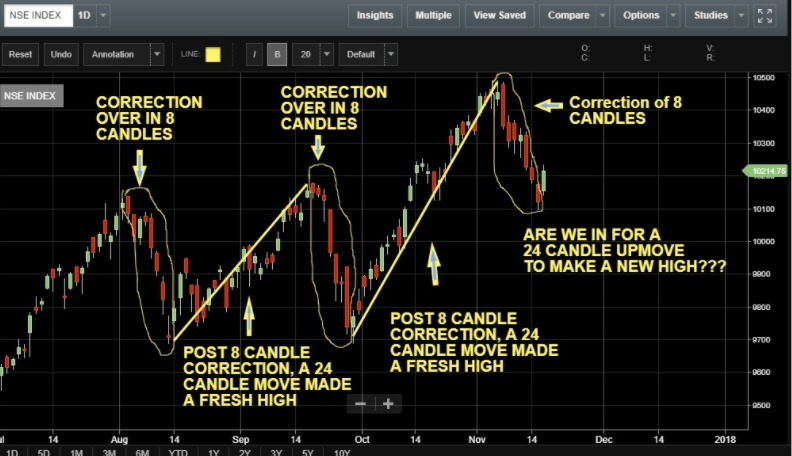This is one of the basic tenets of Dow theory. An up trend is defined as BOTH a higher high and a higher low, and vice versa for a downtrend. For example, in order to reverse from an up-trend to a down-trend, the market must make a lower low and a lower high and then turn DOWN from there. If the market is in a well-defined trend, the largest price swings tend to occur in the direction of the trend. When the price is moving in a clearly defined trend, there are numerous strategies for entry based on the small retracements that occur along the way. These reactions allow the trader to find a tight risk point while still playing for a new leg in the direction of the trend.
A few notes on trends:
- Once a trend is established, it takes considerable power and time to turn it.
- A major trend seldom reverses without warning, such as a pronounced loss of momentum followed by a period of accumulation or distribution, or a buying or selling climax.
- In strong trends, reactions become shallower as the trend progresses.
- The absence of any pattern or swing in the price implies a continuation of the prevailing trend. The strongest trending action tends to be accompanied by a decrease in volatility. This could be describes as a methodical eating away of overhead supply, or a slow, steady price deterioration in the case of a downtrend.
- Trends tend to begin after the market has wound down to an equilibrium level. Just as volatility collapses in the middle part of a trend, price action can become more parabolic in the later stages of a trend. In some extreme cases, 75% of the gains can come in the last 20% of the move.
Have a nice weekend
All the best
Suresh…![]()
![]()
![]()

